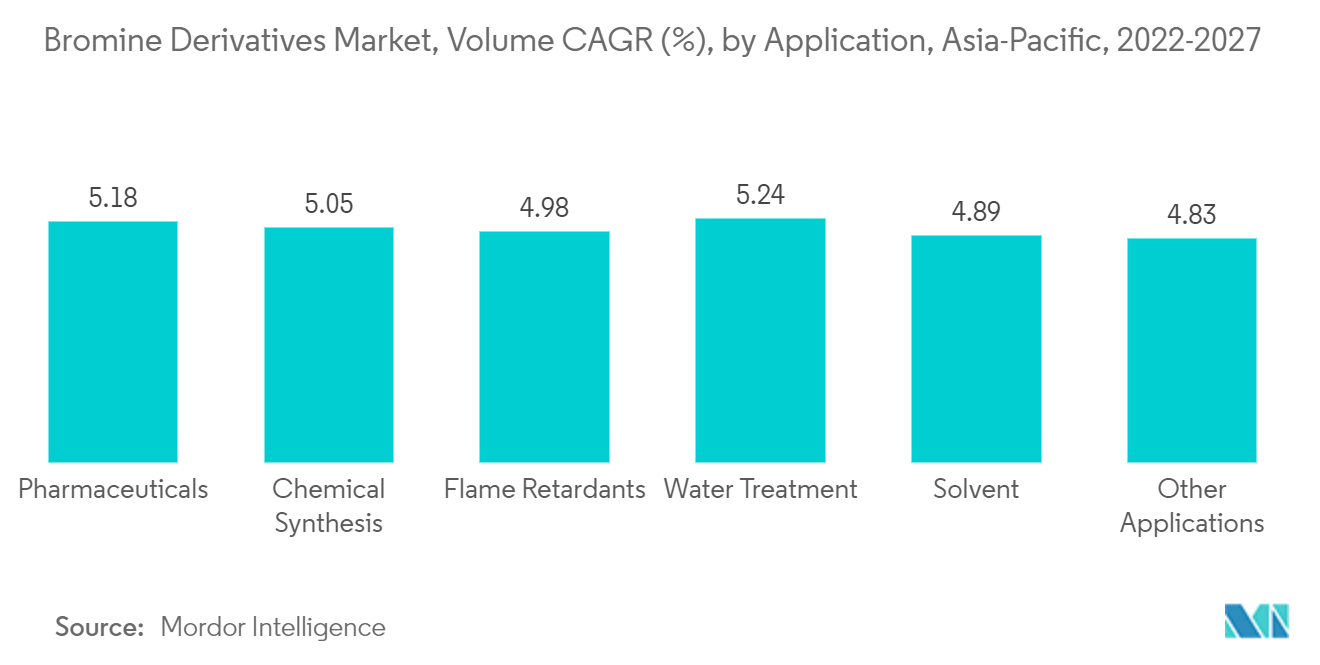Market Trends of Bromine Derivatives Industry
This section covers the major market trends shaping the Bromine Derivatives Market according to our research experts:
Increasing Usage from the Water Treatment Segment
- With the rising need for sustainability, and industries focusing on complete water treatment solutions to increase the recyclability of water, bromine derivatives are expected to grow significantly during the forecast period.
- According to UN Data, in 2020, around 56 percent of household wastewater flows were safely treated globally.
- Bromine derivatives are used in the preparation of biocides for water treatment. Bromine-based biocides work efficiently at controlling the microbiological load in water systems while ensuring corrosion is kept under check. Stabilized bromine-based biocides are widely used in industrial applications such as cooling towers and pre-treatment processes since they eliminate the need to control pH for efficacy.
- One such bromine derivative, dimethyl hydantoin (DBDMH) is being widely used as a disinfectant in recreational water treatment, with limited use in drinking water purification. It is also used as a bleaching agent in the pulp and paper industry. DBDMH is also widely used in treating industrial and commercial water-cooling systems.
- The overall growth of the water treatment industry is expected to be a strong driver for the overall demand and consumption of bromine derivatives used in the water treatment application.

Asia-Pacific Region to Dominate the Market
- Over the past decade, there has been exponential growth in the pharma industry in Asia-Pacific, which is now at the epicenter of the global pharmaceutical industry.
- China and Japan specifically have shown tremendous development and growth in this industry. Well-supported by ongoing infrastructure build-up, increasing healthcare spending and coverage, and a favorable regulatory environment, China has seen strong and consistent growth.
- India, Indonesia, Vietnam, and Thailand also show immense potential opportunities considering the growing population and R&D expenditure. R&D innovation is also booming in the region, with China being second to the United States, accounting for 14% of novel pipeline assets, followed by Japan and Korea at around 5% each.
- The chemical industry segment is also expected to show robust growth in the region. According to CEFIC, China's share of global chemical sales will have risen from its current 41% to 49% by 2030. Indian specialty chemical giants like Pidilite Industries, Aarti Industries Limited, SRF Limited, Deepak Nitrites, and Atul Limited, among others are driving the growth of the chemical industry segment in India.
- With bromine additives being extensively used in the pharmaceutical and specialty chemical industries, the overall growth of these two segments in the Asia-Pacific region is expected to drive the demand for bromine derivatives during the forecast period.


